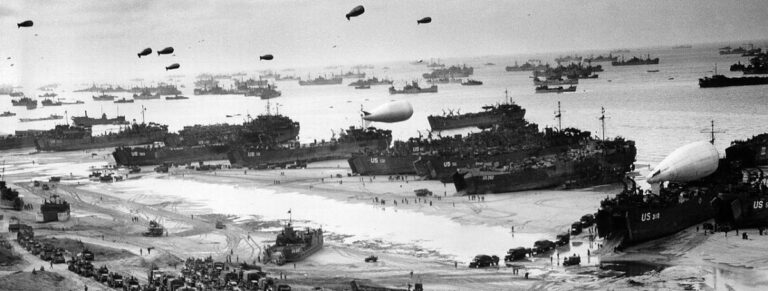Over the course of June 5, many residents of the Normandy region began to suspect something serious was unfolding, and as the first fragmentary reports of Allied movements began to trickle into occupying German defenders, commanders tried to make sense of what was happening, and where. Notably, though, and unexpectedly, Rommel himself was absent from Normandy that day—he had headed back to Berlin for a quick trip to see his wife and, he hoped, to meet with Adolf Hitler. His absence, paired with the complicated command structure of the German forces, left defenders flat-footed at the moment it mattered most.
Within a few hours of the first scattered paratrooper reports, everyone across Normandy, citizen or soldier, could hear the unmistakable sounds that the invasion was under way. * Nothing indicated on the morning of June 5, 1944, that on the other side of the Channel the decision for the attack had been made, and that a giant armada was on its way to storm Fortress Europe. At the headquarters of Army Group B everybody did his work as on other quiet days.

The general weather conditions, worked out every day by naval meteorologists and passed on to us by division, gave the “all clear” for 5 and 6 June. So we did not anticipate any landings, for heavy seas, storms, and low lying clouds would make large-scale operations at sea and in the air impossible for our opponents. Again and again Hitler postponed his declared intention of visiting the Western Front.
Rommel wanted t.
















